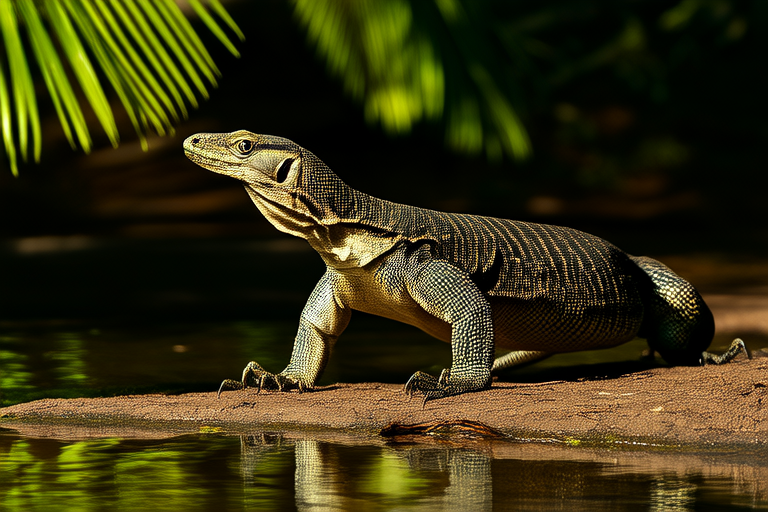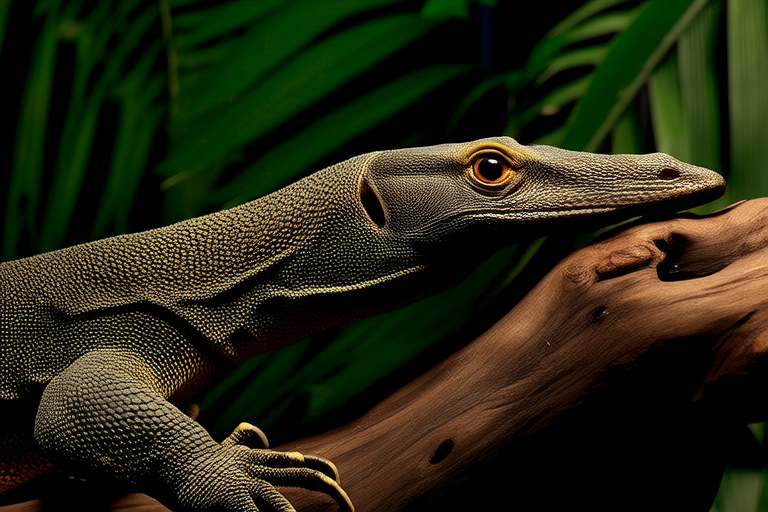
Exploring Water Monitors: A Comprehensive Guide
The water monitor (Varanus salvator) is one of the most fascinating reptiles in the world, known for its remarkable adaptability, intelligence, and unique behaviors. This guide delves into the intricate details of their habitat preferences, dietary needs, social interactions, and survival strategies, while also addressing common misconceptions and providing valuable insights for potential pet owners.
Habitat Preferences
Water monitors thrive in diverse environments, ranging from dense tropical forests to coastal mangroves and freshwater swamps. They prefer areas with abundant water bodies such as rivers, lakes, and ponds, where they can swim and dive to hunt for prey. These reptiles are excellent climbers and can be found basking on trees or rocks near water sources. Their habitats must provide ample hiding spots, like crevices in rocks or dense vegetation, to protect them from predators and extreme weather conditions.
Dietary Needs
Water monitors are opportunistic omnivores, consuming a wide variety of foods, including insects, small mammals, birds, fish, eggs, and even fruits. Juveniles primarily feed on insects and smaller prey, while adults have a more varied diet, often scavenging for carrion. They play a crucial role in their ecosystems by controlling pest populations and recycling nutrients through their feeding habits.
Social Interactions
Contrary to popular belief, water monitors are not solitary creatures. They exhibit complex social behaviors, including communication through body language, vocalizations, and chemical signals. Males compete for territory and mates during breeding season, while females may form loose associations to protect nesting sites. Recent studies have shown that water monitors engage in cooperative hunting, particularly when targeting larger prey items.
Survival Strategies
Water monitors possess several adaptations that enhance their survival in the wild. Their powerful limbs enable them to climb trees and escape predators, while their keen sense of smell helps locate hidden prey. Additionally, they can hold their breath underwater for extended periods, allowing them to ambush unsuspecting victims. When threatened, water monitors can release a foul-smelling secretion from their anal glands to deter attackers.
Common Misconceptions
One prevalent myth about water monitors is that they are aggressive towards humans. In reality, these reptiles are generally shy and avoid confrontation unless provoked. Another misconception is that they make ideal pets for beginners; due to their size, intelligence, and specific care requirements, water monitors require experienced handlers.
Recent Scientific Findings
New research has uncovered fascinating aspects of water monitor biology and behavior. For instance, scientists have discovered that these reptiles can detect seismic vibrations produced by moving prey, enhancing their hunting success. Additionally, genetic studies have revealed previously unknown subspecies, expanding our understanding of water monitor diversity.
Pet Ownership Responsibilities
For those seriously considering owning a water monitor as a pet, it’s essential to understand the significant commitment involved. Water monitors grow rapidly and can reach lengths of up to seven feet, requiring spacious enclosures equipped with climbing structures, swimming areas, and temperature gradients. Owners must also invest in appropriate heating, lighting, and humidity control systems to mimic natural conditions.
Feeding water monitors requires careful planning, as their diet should include a mix of commercially available products and fresh produce. Regular veterinary check-ups are necessary to monitor health and address any potential issues promptly. Socialization is another critical aspect of caring for these intelligent animals, ensuring they remain calm and manageable throughout their lives.
Conclusion
Water monitors are captivating creatures with intriguing behaviors and habits that continue to captivate researchers and enthusiasts alike. By understanding their unique needs and respecting their place in nature, we can better appreciate these magnificent reptiles and contribute to their conservation efforts.






